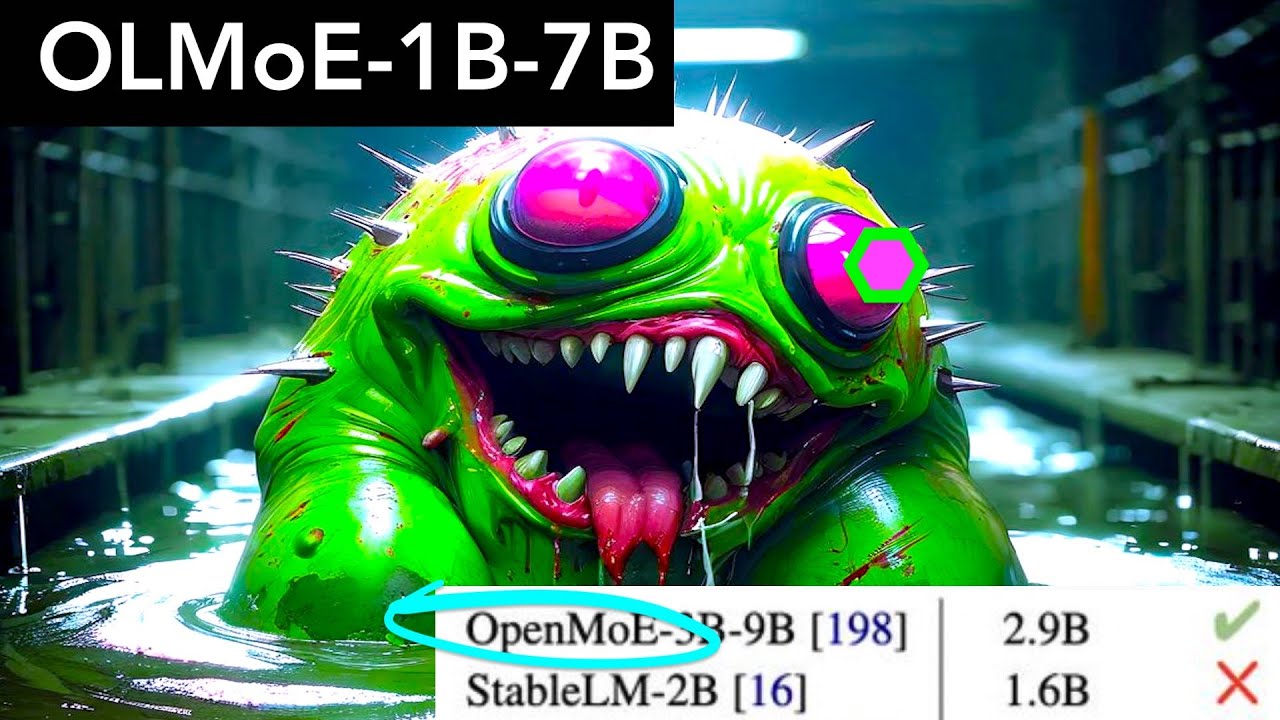The video highlights the OLMoE-1B-7B model from Allen AI, which utilizes a mixture of experts architecture to achieve high performance and efficiency while being significantly smaller than closed-source models like Google’s Gemma and Meta’s Llama. It emphasizes the importance of open-source contributions and the model’s ability to specialize in various domains, showcasing its potential to revolutionize the development of large language models.
The video discusses a notable trend in the development of large language models (LLMs), particularly focusing on the shift from creating massive models to more efficient and faster smaller models that can potentially run on mobile devices or laptops. The speaker highlights the emergence of open-source models, specifically the OLMoE-1B-7B from Allen AI, which utilizes a mixture of experts architecture. This model is designed to be both efficient and high-performing, outperforming closed-source models like Google’s Gemma and Meta’s Llama while being significantly smaller in size.
OLMoE-1B-7B consists of 64 experts, with only eight active at any given time, and has been trained on approximately 5 trillion tokens. The model’s performance is impressive, achieving results comparable to larger models while requiring five times fewer parameters and four times less training compute. The speaker emphasizes the importance of open-source contributions, noting that OLMoE is fully open-source, including its data, code, and training logs, allowing others to replicate the model if they have the necessary computational resources.
The video also delves into the technical aspects of how OLMoE achieves its performance, particularly its efficiency in inference and training. The mixture of experts architecture allows for faster processing and reduced resource requirements, making it a cost-effective option for production use. The speaker points out that OLMoE not only excels in speed but also in benchmarking performance, especially in post-training scenarios, where it shows significant advantages over models with larger active parameters.
Additionally, the speaker discusses the model’s ability to specialize in different domains, highlighting the importance of expert choice and routing in determining which expert to utilize for specific tasks. The analysis of token IDs and their correlation with expert performance reveals insights into how the model can effectively handle various inputs. The speaker also addresses a common question regarding the impact of expert choice on text generation, clarifying that OLMoE’s design mitigates potential issues related to causality in auto-regressive generation.
In conclusion, the video presents OLMoE-1B-7B as a groundbreaking open-source model that sets a new standard for efficiency and performance in the realm of LLMs. The speaker encourages viewers to consider the implications of smaller, more efficient models in the AI landscape and invites feedback on whether the community prefers advancements in small models or the development of larger, more capable models. The discussion underscores the rapid evolution of AI technology and the potential for independent developers to leverage open-source tools to create competitive models.
